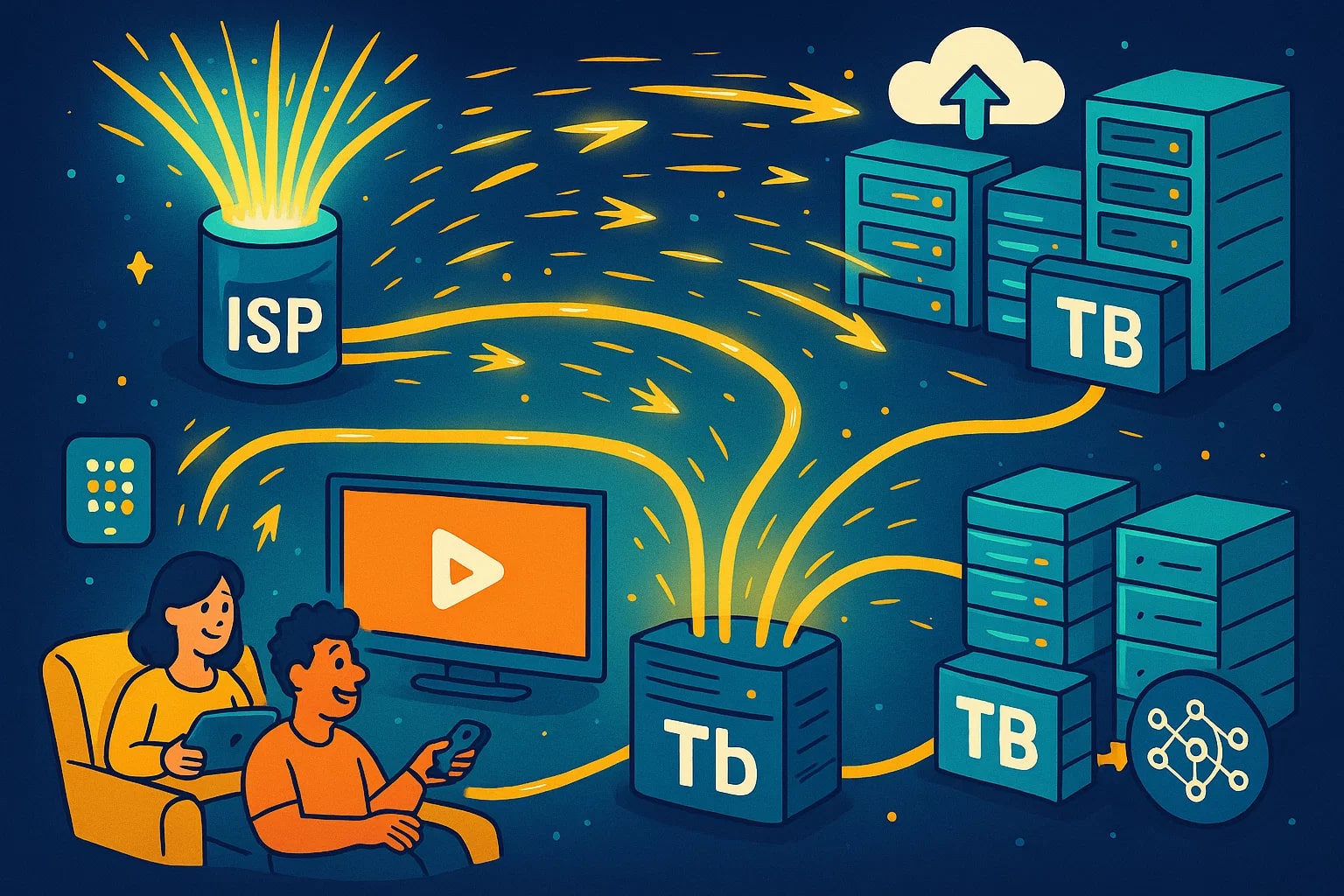terabit to terabyte – How to convert Tbit to TB
In large-scale systems — whether it’s streaming infrastructure, enterprise networks, or data center operations — you’ll come across both terabits and terabytes. While both use the “tera” prefix, they measure different things: terabits for data transfer rates and terabytes for stored data. If you're dealing with high-speed transfers or planning capacity, converting terabits (Tbit) to terabytes (TB) makes sure your calculations stay aligned.
Let’s go over how to convert these two massive units — and why the difference between them matters more than most people think.

What is a terabit (Tbit)?
A terabit is a unit of digital data equal to 1,000,000,000,000 bits, or one trillion bits. It’s commonly used in contexts like:
-
Network backbone throughput
-
Fiber-optic internet speeds
-
Data transfer capacity between systems
-
Telecom infrastructure
You’ll often see terabits in specifications for routers, switches, satellite links, or distributed storage systems.
What is a terabyte (TB)?
A terabyte is a unit of digital storage equal to 1,000,000,000,000 bytes, or 8,000,000,000,000 bits (since 1 byte = 8 bits). Terabytes are used to measure:
-
Hard drive and SSD capacity
-
Cloud storage quotas
-
Backup archive sizes
-
Application and media file volumes
So while both Tbit and TB are huge units, terabytes hold more data because they’re based on bytes instead of bits.
How to convert terabit to terabyte
To convert, use the relationship:
1 byte = 8 bits
Therefore:
1 terabyte = 8 terabits
That means:
terabytes = terabits ÷ 8
or
terabytes = terabits × 0.125
You’ve moved 16 terabits of data across a fiber line. To find out how much storage that translates to:
16 ÷ 8 = 2 terabytes
A streaming platform transfers 10 Tbit during a peak hour. That’s:
10 ÷ 8 = 1.25 terabytes of content delivered
A security archive uploads 4.5 terabits of encrypted video overnight. Stored, that would take:
4.5 × 0.125 = 0.5625 terabytes
Need more conversions like this? Use the Data Storage Converter or find related tools in our full Conversion tools list.
Did you know?
-
A 4K UHD movie encoded at high quality can range from 80 to 150 GB — that’s between 0.64 and 1.2 Tbit of streamed data.
-
Major internet exchanges often process multiple terabits per second, which translates to hundreds of terabytes per minute.
-
In cloud replication, transferring 8 Tbit of data is equivalent to syncing 1 TB of storage.
-
NASA’s deep space missions stream terabit-sized datasets back to Earth — and each byte of it must be error-checked and preserved.
-
In high-frequency trading, systems are benchmarked in terabits, but all transaction logs are archived in terabytes.
When speed meets storage – putting terabits in terabytes
When Google Fiber and similar ISPs began offering 1 Gbps home internet, most users only noticed faster streaming. But on the back end, service providers moved from gigabit routing to terabit-scale switching, upgrading hardware to handle the huge data volumes flowing across networks.
Every video streamed, every app downloaded, and every system backup involves translating bits in motion (terabits) into data at rest (terabytes). So converting Tbit to TB is more than math — it’s about matching transfer expectations with real storage capacity.
In high-performance environments, like AI training pipelines, a single job may require downloading several terabits of source data before converting it to terabytes of structured storage for processing.

Divide by 8 — and your numbers match
Here’s the final shortcut:
terabytes = terabits ÷ 8
That’s all it takes to shift from transmission rate to storage volume. Use this conversion whenever you’re moving data at high speed and want to know how much physical space it will take once it lands.
Want to handle other conversions just as easily? Try the Data Storage Converter or explore all digital unit tools in our full Conversion tools collection.

